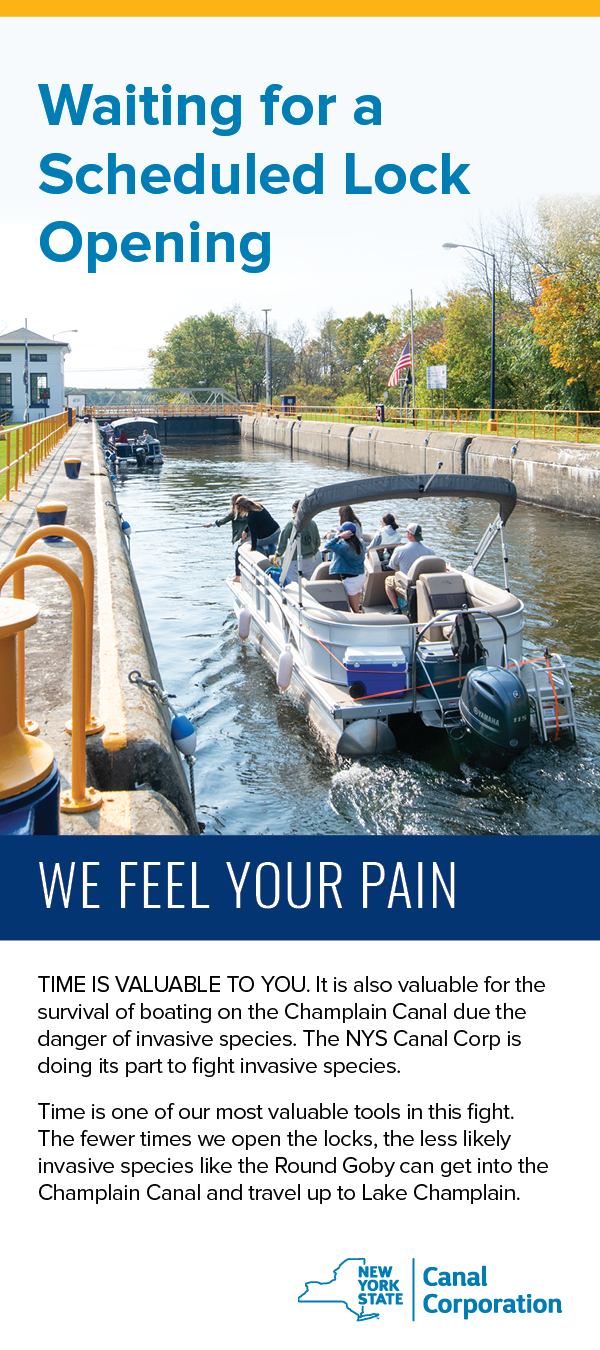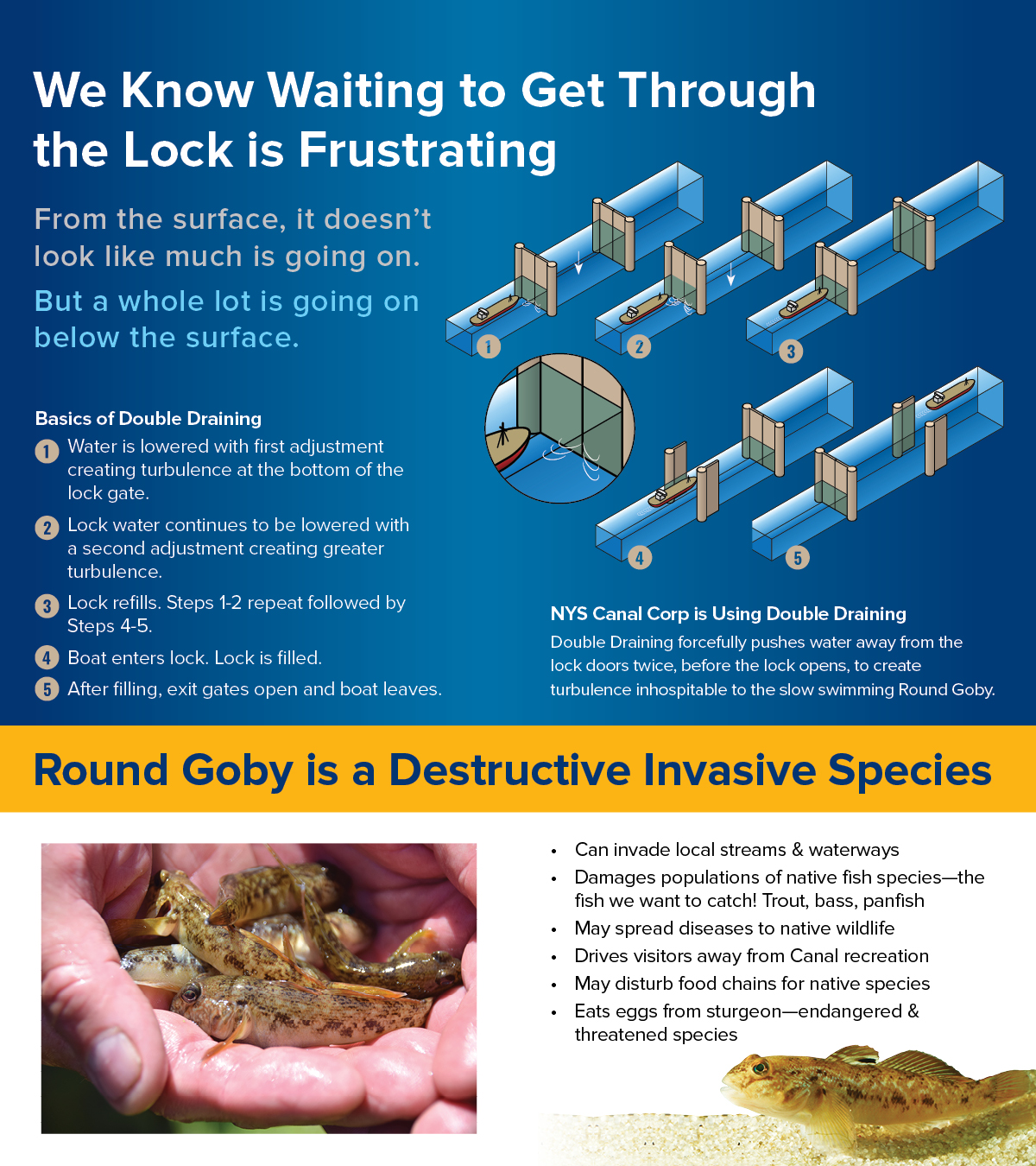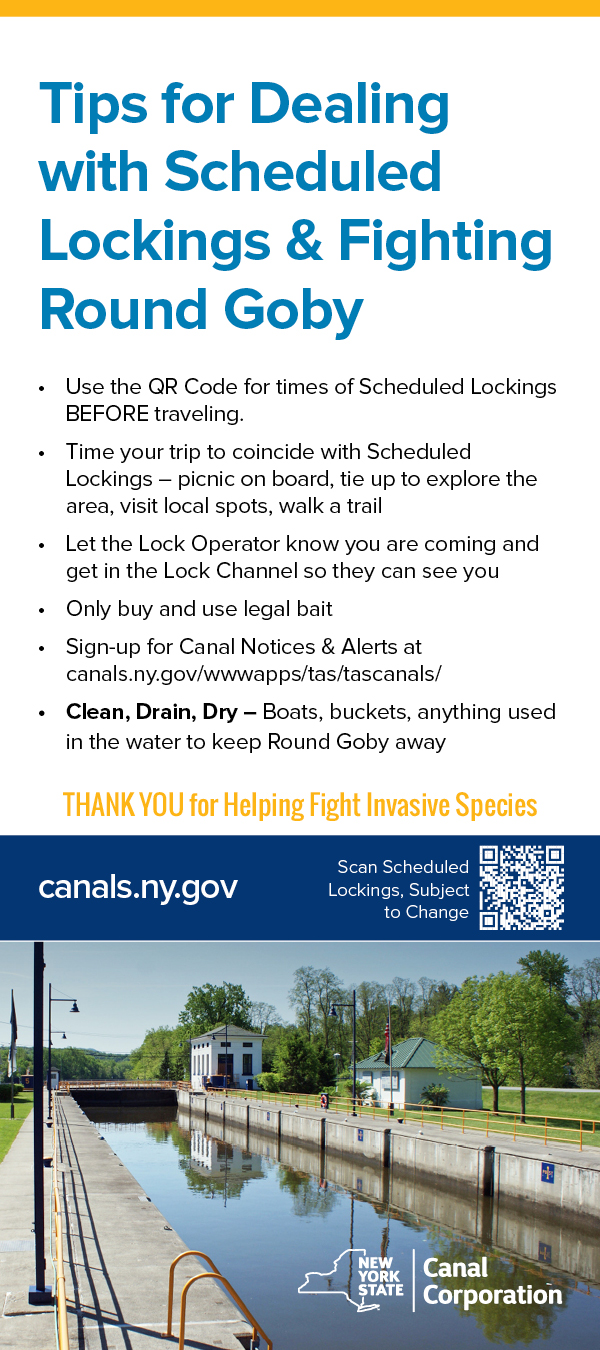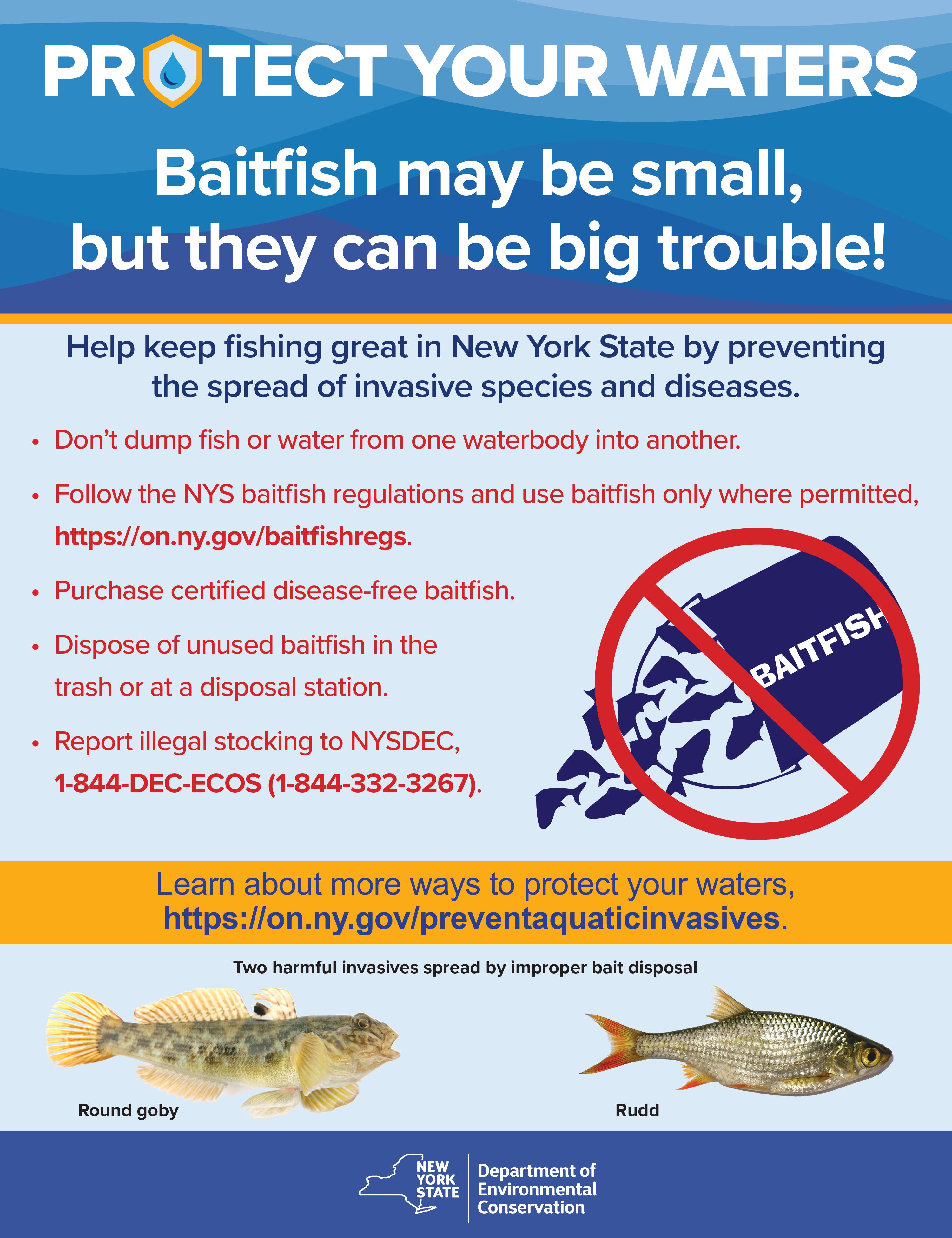Invasive Species
The NYS Canal Corporation plays an important role in mitigating the spread of invasive species (IS).
Champlain Canal: Mitigating the Spread of the Round Goby
The Canal Corporation is working with the New York State Department of Environmental Conservation (DEC) on a comprehensive effort to combat the potential spread of the round goby, an aquatic invasive species, to the Lake Champlain Basin.
The round goby was discovered
in the Hudson River near Troy in July 2021 and there is a concern that the invasive fish may move north towards Lake Champlain via
the Champlain Canal.
Aquatic invasive species like the round goby can out-compete native fish species, disrupting ecosystems and damaging local economies dependent on recreation. There is also a concern that if the round goby reaches Lake Champlain, it will cause significant harm to the ecosystem there.
Learn more in a January 2023 joint, DEC-Canals news release here.
Current Status:
As of Spring 2023, sampling conducted by U.S. Geological Survey and U.S. Fish and Wildlife Service searched for evidence of the round goby in the Champlain Canal between Waterford and Fort Edward and within Lake Champlain through eDNA sampling. The round goby has not been detected north of Champlain Canal Lock C-1 in Waterford or within Lake Champlain.
Recent Event:
In Mar 2024, Kate Littrell, Senior Environment Scientist, working for Canals and NYPA, presented what the Canal Corporation is doing to continue fighting aquatic invasive species, at the Mohawk Watershed Symposium at Union College in Schenectady. Her presentation focuses on the work being done, in collaboration with NYS Department of Environmental Conservation, to stop the round goby from entering the Champlain Canal. See the abstract for her presentation here.
The Canal Corporation’s Role in Mitigating the Spread
Beginning during the 2022 Navigation Season, we began implementing several risk reduction strategies along the Champlain Canal. Those include:
- Scheduled lockings for northbound vessels at Locks C-1 (Waterford) and C-2 (Halfmoon)
- Lock C-1 will pass northbound traffic daily on the odd hours (7 am, 9 am, 11 am, 1 pm, 3pm, 5 pm, 7 pm, and 9 pm)
- Lock C-2 northbound traffic will be locked through when all vessels from Lock C-1 arrive at Lock C-2
- Southbound traffic will remain on demand
- “Double Draining” of Locks C-1 and C-2
- After northbound vessels enter the lock chamber, the lock will be filled, drained and refilled before the vessels can exit the lock proceeding northbound
- For all southbound traffic, vessels can exit the lock after the initial draining. A second refilling and draining of the lock will occur after all vessels have left the lock
- The Canals Corporation’s Role in Mitigating the Spread.
The scheduling of lockages at these locations will allow the Canal Corporation to collect more accurate data about the number of vessels locking through and their timing, so that information may be compared to future eDNA sampling results.
The double draining is intended to push any round goby away from the lock through velocity.
Rapid Response Plan Developed by Canals

Our Rapid Response Plan focuses on public education and outreach to change boater behavior and reduce opportunities for the introduction of round goby. As an early intervention strategy, we will use surveys and monitoring to detect the presence of round goby in the Champlain Canal. If our strategies detect any invasive species, our plan allows us to respond quickly to contain any round goby.
We have also developed an initial Trigger Action Response Plan (TARP) based on adaptive management strategies and will evolve as additional monitoring and scientific information become available. These choices have been made based on the best available information and current understanding of the round goby.
To review the full Rapid Response Plan and TARP, updated May 2023 visit here.
You Can Help Mitigate the Spread
Nationwide, research shows that recreational boating is one of the main ways invasive species spread. As we implement these risk-reduction strategies along on the Champlain Canal this season, we encourage all users and stakeholders to learn how they can assist in mitigating the spread of aquatic invasives species to ensure the Canal’s resiliency for generations to come.
Boaters and anglers are advised to always clean, drain and dry boat/fishing equipment and practice proper use and disposal of unwanted baitfish. Report any invasive species to iMapInvasives at www.imapinvasives.org



